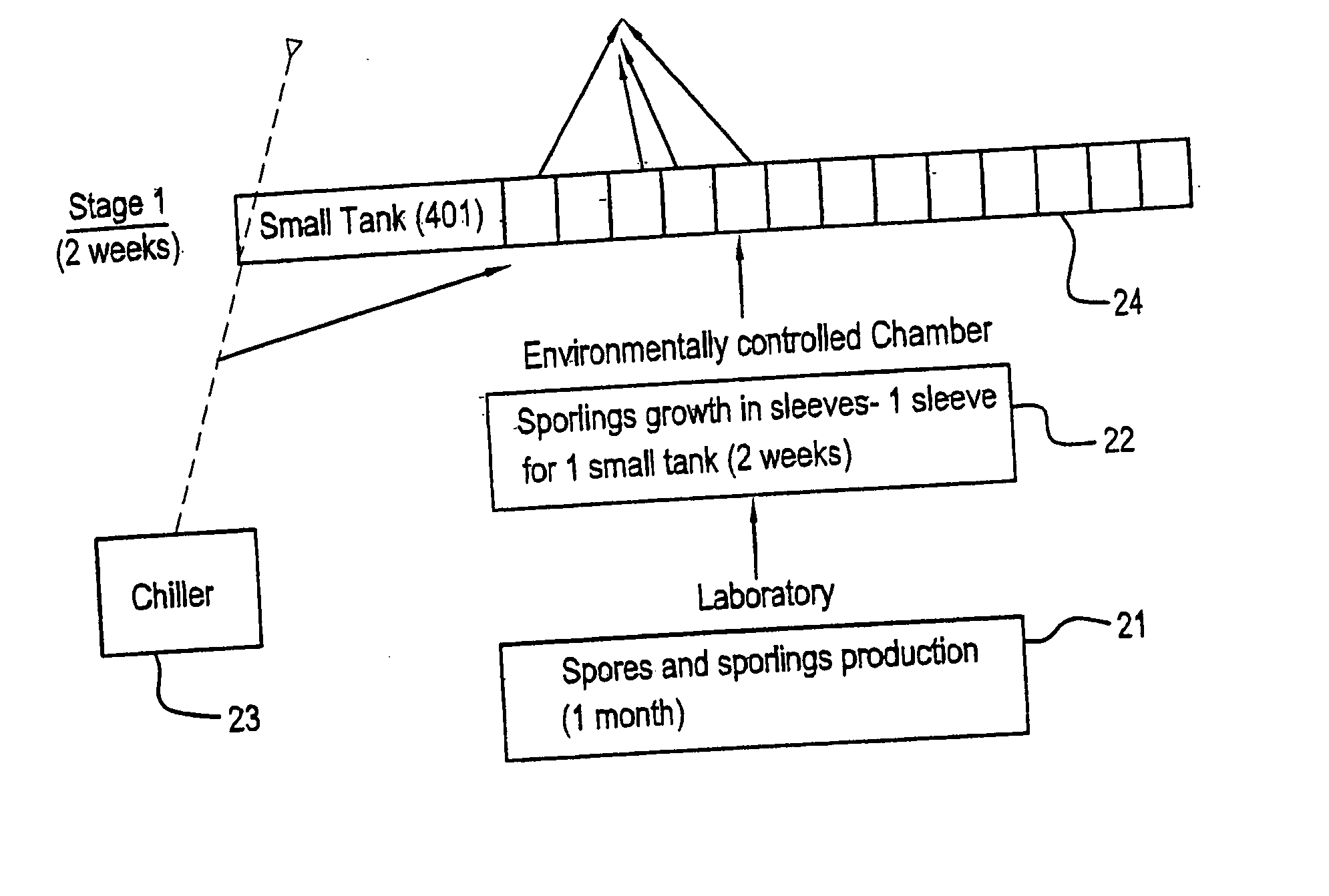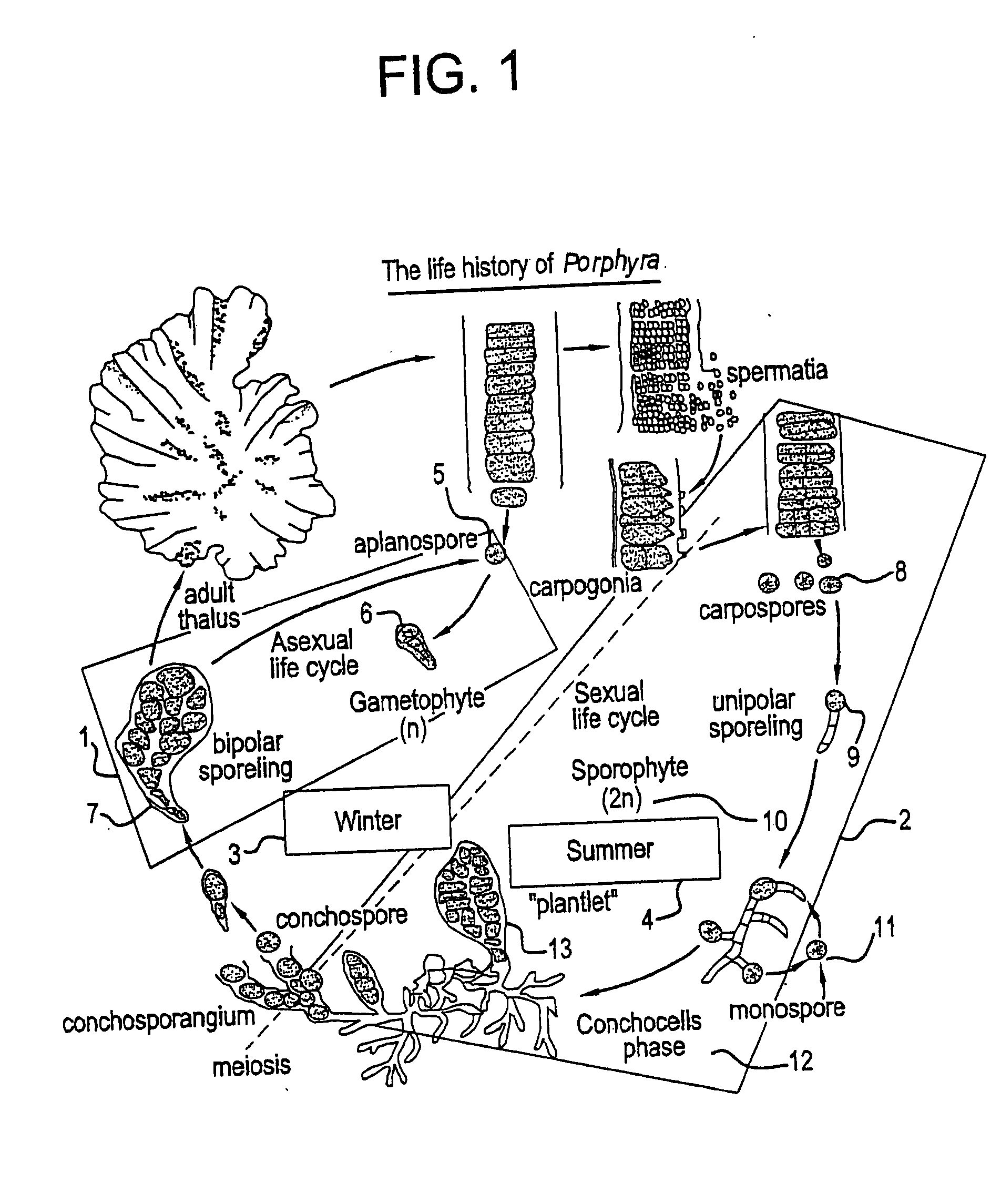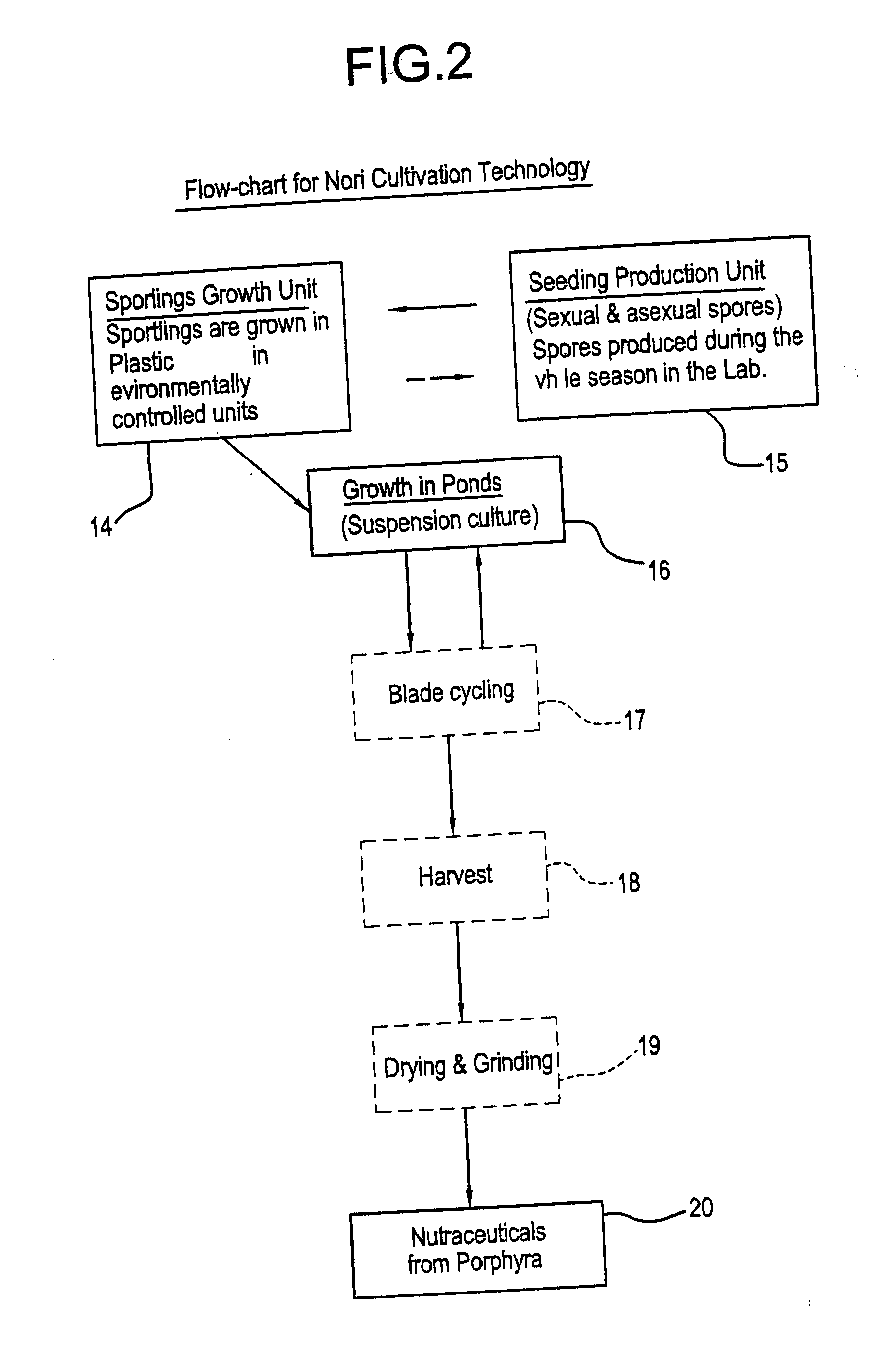Compositions of enriched seaweeds in land-based sea water ponds
a technology of seaweed and enriched seawater, which is applied in the field of composition of enriched seaweed in land-based seawater ponds, can solve the problems of inability to successfully apply technology in open-water environments controlled
- Summary
- Abstract
- Description
- Claims
- Application Information
AI Technical Summary
Benefits of technology
Problems solved by technology
Method used
Image
Examples
example a
Indoor Phase
[0060] 1. Production of Sporlings
[0061] Three months before the cultivation season begins, spores are produced in order to grow mother sporlings. See FIG. 2 and FIG. 3. The sporulation process can be achieved using methods described fully in the art and may include:
[0062] a) Asexual sporulation from sporlings that were grown from the previous cultivation season.
[0063] Sporlings discharge monospores when they are grown in petri dishes or in any unfavorable condition. Some disintegrate completely while releasing monospores in large quantities, on reaching 1-5 mm length—for example, Porphyra Yezoensis (YEZ). In YEZ all the cells of the sporlings are released as monospores. Other species release monospores on reaching 1-2 cm long like Porphyra sp. grown in Taiwan (TAW). This more than any other characteristic is a good sign for the degree of the sensitivity of the sporlings.
[0064] b) Sporulation from thawing sporlings that were frozen at the end of the previous cultivat...
example b
P Example B
Out Door Phase
[0078] 1. Stage 1 growth—Referring to FIG. 3, Sporlings in the range of 0.5-1 cm long which were grown in the plastic sleeves are transferred to outdoor conditions to small (40 L) growth tanks, 1 sleeve for each tank. The tanks are generally U shaped, made fiber glass or plastic, with a volume capacity of 30 to 100 L, and dimensions in the range of 0.24 to 0.26 (Depth, Dp)×0.48 to 0.51 m (W)×0.68 to 1.0 m (L). They are grown in running seawater for 2-3 weeks until the sporlings reach 2-4 cm long. The seawater is enriched twice a week with N&P nutrients. There is possibility of cooling the seawater in the tanks with a chiller (23) in the beginning of the cultivation season. The cooling procedure can reduce ambient seawater by 3-5° C. and can add 1-2 weeks of cultivation time. The tanks are shaded with 1 or 2 black plastic screens during the growth period particularly for the first week.
[0079] 2. Stage 2 growth—Referring to FIG. 4, after 2-3 weeks of growing...
example c
Annual Cultivation Activity by Growth Stages of Two Species of Porphyra by the Technology of the Present Invention
[0082]FIG. 7 describes the results of growing two species of Porphyra, during a period starting in June to the following year in May. The temperature conditions were changed and the different stages of growth—growth of mother sporlings, sporulation / sporling, growth in sleeves, stage 1, stage 2, stage 3, and stage 4—were controlled using the technology of the invention. The results obtained demonstrate that the technology of the invention can be used to grow almost all year round (provided outdoor conditions are favorable) in any land-based sea pond system. Nori cultivation is therefore, no longer limited to open seas, and no longer restricted by open-sea climatic conditions.
PUM
 Login to View More
Login to View More Abstract
Description
Claims
Application Information
 Login to View More
Login to View More - R&D
- Intellectual Property
- Life Sciences
- Materials
- Tech Scout
- Unparalleled Data Quality
- Higher Quality Content
- 60% Fewer Hallucinations
Browse by: Latest US Patents, China's latest patents, Technical Efficacy Thesaurus, Application Domain, Technology Topic, Popular Technical Reports.
© 2025 PatSnap. All rights reserved.Legal|Privacy policy|Modern Slavery Act Transparency Statement|Sitemap|About US| Contact US: help@patsnap.com



